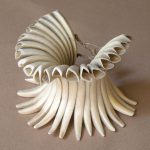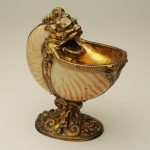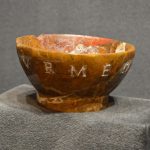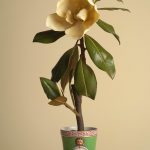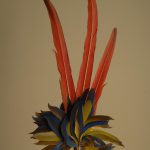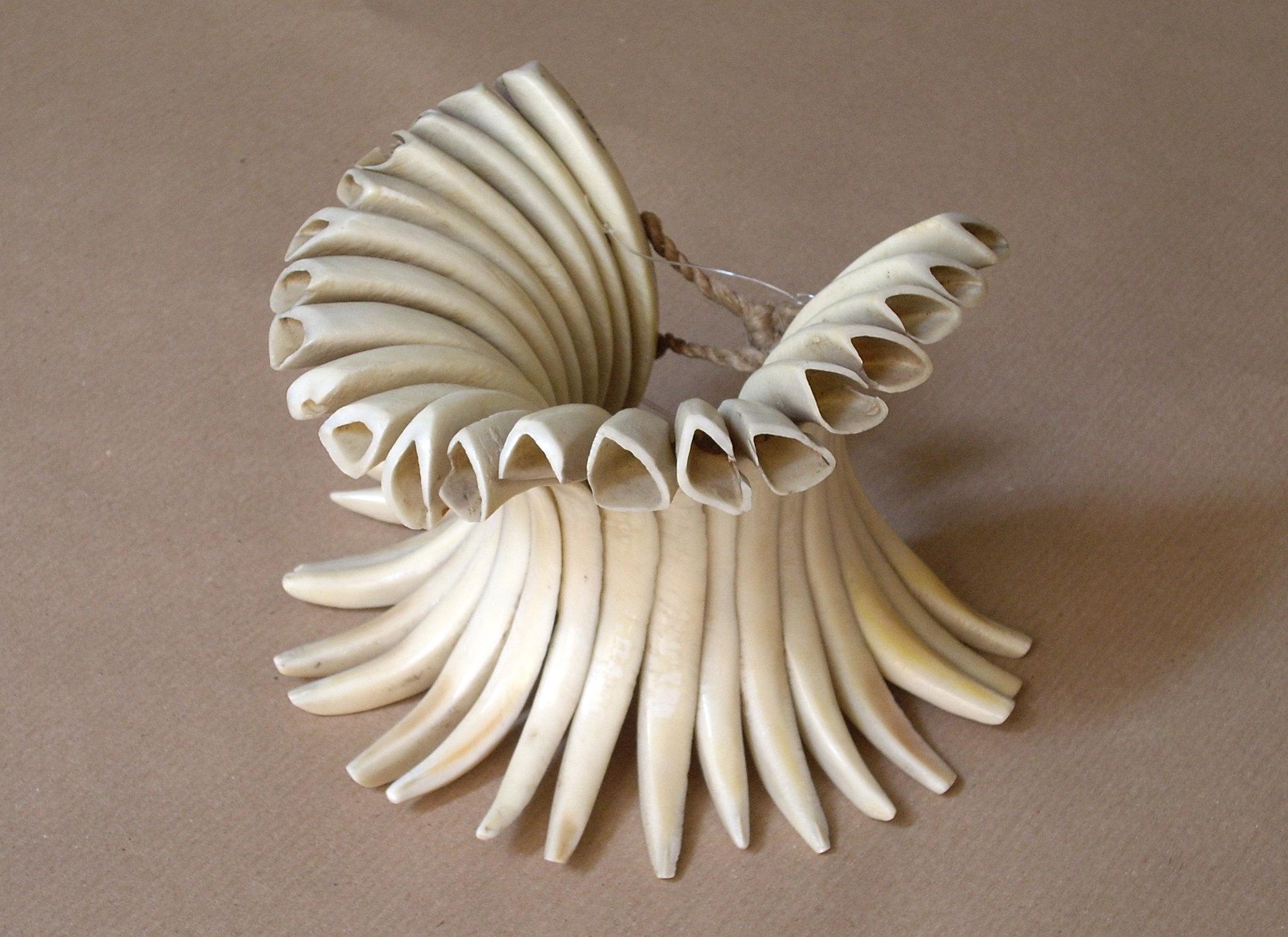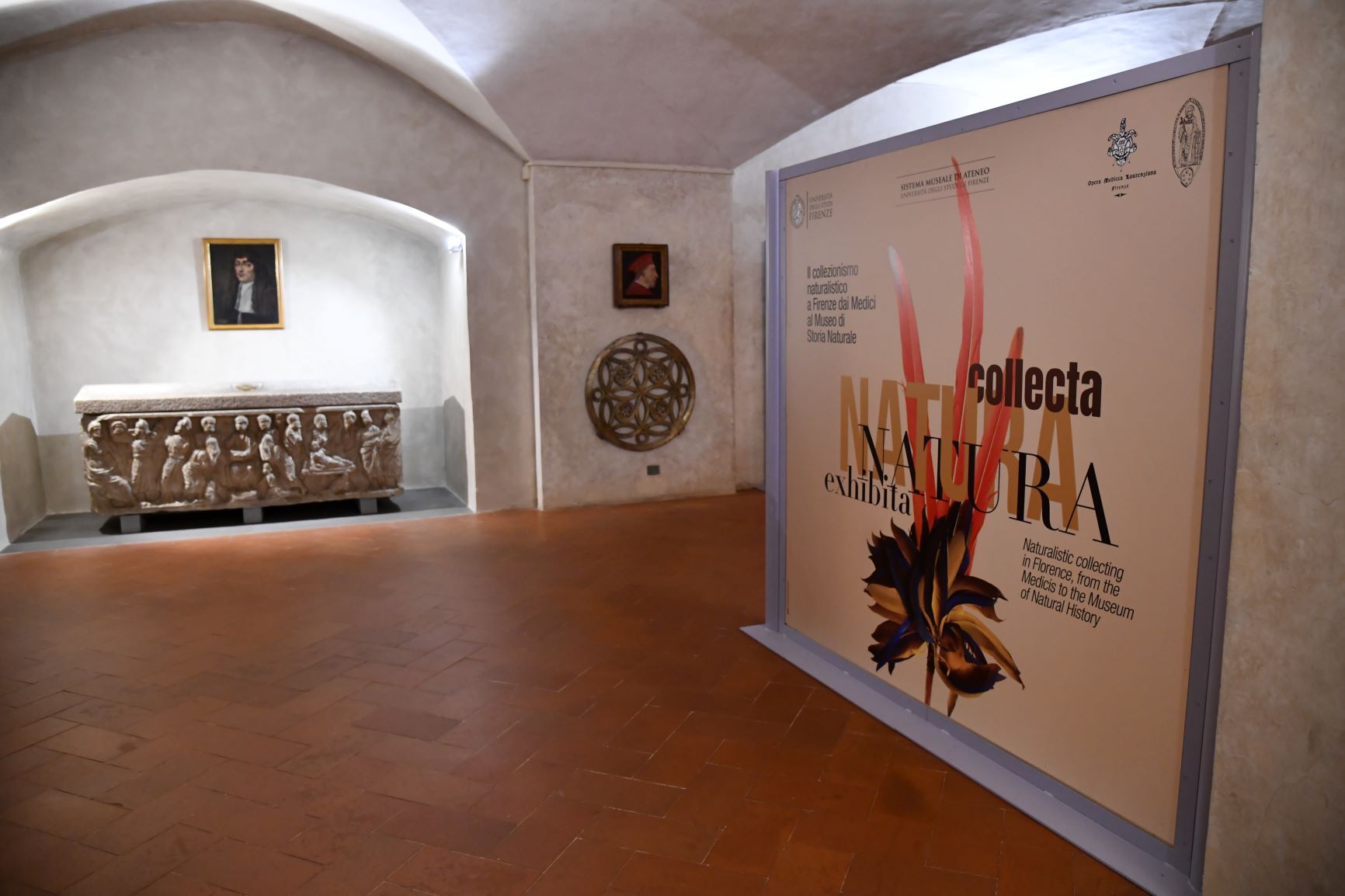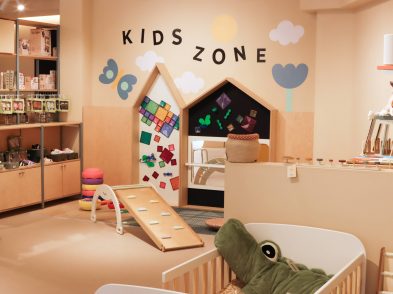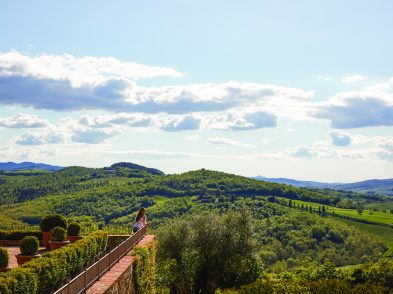- Wild pig teeth bracelet
- Nautilus shell salt cellar 1550-1560
- Jasper quartz cup, Lorenzo Il Magnifico collection
- Magnolia Grandiflora and fruit wax model
- Yanomami ornament, Ara’s feathers, Brazilian Amazon XX century
Fossils, feathers and flamingoes; it gets curiouser and curiouser in the Salone di Donatello at the Basilica of San Lorenzo.
Stepping into the wonderland at the mysterious and fascinating Natura Collecta, Natura Exhibita treasure trove, The Florentine was enthralled as each display cabinet revealed its own particular delight. Curator Fausto Barbagli tells us more about this unique and unusual trip through time.
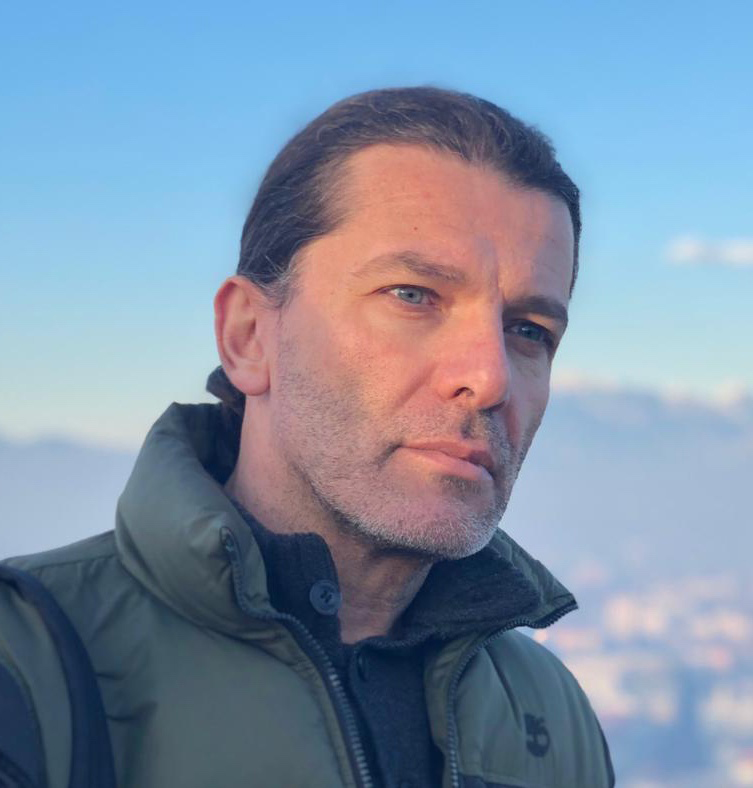
Fausto Barbagli, the curator of the exhibition, enthuses about the collection’s ability to appeal to all ages and interests as well as its important and significant setting, close to the tomb of the Medici in the Basilica of San Lorenzo, where their prized natural history collection now lies on display.
Entering into the magnificent setting of the Chiostro of San Lorenzo, you leave the sunlight behind and descend to the crypts, intrigued—and possibly on edge—as you step into the unknown. What awaits you is an exhibition like no other in Florence. Wander past a bracelet made of wild pig teeth, and then step back to see whether your eyes have deceived you. Vast stretches of terrain are covered with objects from the Brazilian Amazon to Indonesia and everywhere in between. With the La Specola museum temporarily closed due to works, the objects are housed in San Lorenzo in a collaboration between the Sistema Museale di Ateneo of the Università di Firenze, the Opera Medicea Laurenziana and the Parrocchia di San Lorenzo.
As you wander the well-considered spaces of the Donatello Hall, you pass from zoology and ethnology through to botany and earth sciences, journeying through generations and detailing the evolution of naturalistic collecting from its Medicean origins to the present day. Barbagli explained, “Sacred objects in the Middle Ages were of optimum value and in the Renaissance gave birth to the tradition of collecting.” The subsequent rooms track the development in collecting practices throughout centuries. There is also a philosophical element to this exhibition, as Barbagli elaborates, “We didn’t want to simply select precious jewels to be the main focus, but rather the opposite. The choice of works was made in order to create a historical narrative and absolutely does not want to constitute a selection of the most important finds of the Museum. The narration is that of an outstanding cultural process that is an in-depth analysis on the museum’s key subject matters, encouraging you to visit the other similar museums on permanent display. We want to avoid the selection of the most beautiful which, on the contrary, is a reductive process for hasty tourists and quickly exhausts the visitor’s interest. We want this exhibition to start a journey of discovery.”
The suitability of the location is undeniable. The tomb of Cosimo the Elder denotes the start of the Medici family. The miracles of nature are both cherished and honoured in the objects acquired by the House of the Medici. Coral, mother of pearl and an intricately painted oyster shell grapple for your attention, and eagle-eyed visitors will spot the initials LAURMED (Lorenzo de’ Medici) on a jasper quartz bowl. The history of collecting and its changes and developments throughout the course of centuries is what is subsequently documented. A pre-Columbian coat acquired as a symbol of power, a Chinese Ming cup in jade received as a diplomatic gift—each object tells a story and opens a window to further understanding.
A special space is dedicated to the figure of Blessed Niccolò Stenone, bishop and scientist buried in San Lorenzo, whose collections are on display. Other noteworthy objects include those that Giuseppe Raddi brought back from his trip to Brazil in 1817, the first expedition to acquire a naturalistic collection organized by an Italian museum. The anatomical wax models are possibly the most striking and/or shocking elements of the exhibition, certainly attracting the most dramatic of responses to any of the other works. Dating from around 1771, the Grand Duke of Tuscany Pietro Leopoldo commissioned the preparation of accurate ceroplastic models of the human body, plants and animals. Continue on to see treasures amassed by James Cook on his trip to the Pacific, learning about the history of systematics from Aristotle to the present along the way.
The exhibition finishes on the appetizing promise of future collections, with their collaborative anthropology project outlined in support of the struggles of native peoples to save their traditional cultures. Then there is BatBox, “a bat for a friend”, an initiative to monitor the role of bats in the ecosystem. All interests are catered to, from natural history enthusiasts and history of science buffs to those more artistically-inclined: whatever your passion, you can’t help but be impressed by these cabinets of curiosities, the crossroads between history and the sciences. Emerge feeling like you’ve travelled throughout all time, enriched and invigored by the thrill of discovery, eager to explore more of these museums and their scientific splendor.
How to visit the exhibition
Natura collecta, Natura exhibita is open from Monday to Saturday, 10am – 5.30 pm.
The entry ticket is 7 euro, and it includes access to the exhibition and the Basilica of San Lorenzo. Guided tours information.
Access through the ticket office of the San Lorenzo basilica (piazza San Lorenzo 9 – Firenze).

